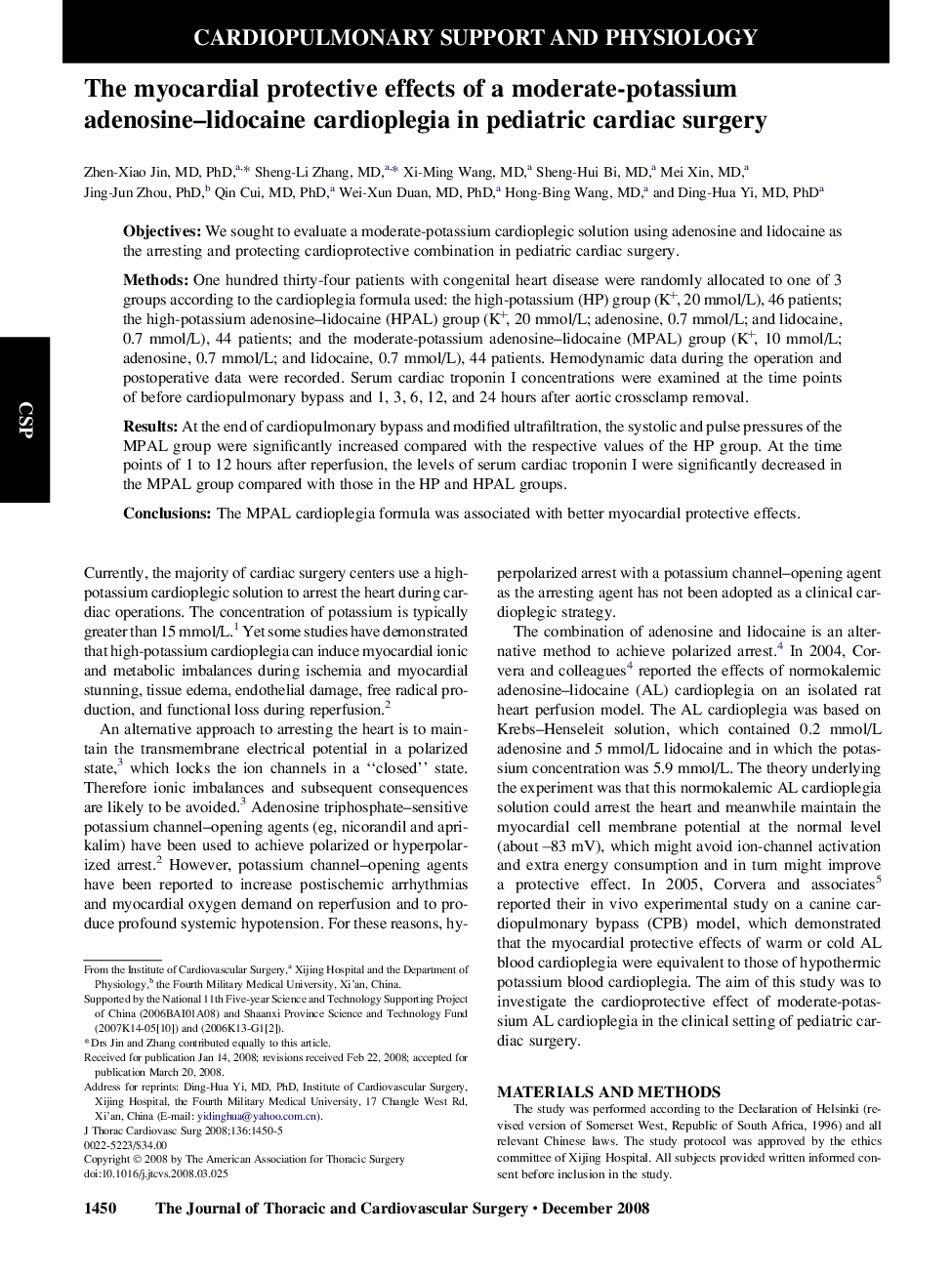| Article ID | Journal | Published Year | Pages | File Type |
|---|---|---|---|---|
| 2982434 | The Journal of Thoracic and Cardiovascular Surgery | 2008 | 6 Pages |
ObjectivesWe sought to evaluate a moderate-potassium cardioplegic solution using adenosine and lidocaine as the arresting and protecting cardioprotective combination in pediatric cardiac surgery.MethodsOne hundred thirty-four patients with congenital heart disease were randomly allocated to one of 3 groups according to the cardioplegia formula used: the high-potassium (HP) group (K+, 20 mmol/L), 46 patients; the high-potassium adenosine–lidocaine (HPAL) group (K+, 20 mmol/L; adenosine, 0.7 mmol/L; and lidocaine, 0.7 mmol/L), 44 patients; and the moderate-potassium adenosine–lidocaine (MPAL) group (K+, 10 mmol/L; adenosine, 0.7 mmol/L; and lidocaine, 0.7 mmol/L), 44 patients. Hemodynamic data during the operation and postoperative data were recorded. Serum cardiac troponin I concentrations were examined at the time points of before cardiopulmonary bypass and 1, 3, 6, 12, and 24 hours after aortic crossclamp removal.ResultsAt the end of cardiopulmonary bypass and modified ultrafiltration, the systolic and pulse pressures of the MPAL group were significantly increased compared with the respective values of the HP group. At the time points of 1 to 12 hours after reperfusion, the levels of serum cardiac troponin I were significantly decreased in the MPAL group compared with those in the HP and HPAL groups.ConclusionsThe MPAL cardioplegia formula was associated with better myocardial protective effects.
